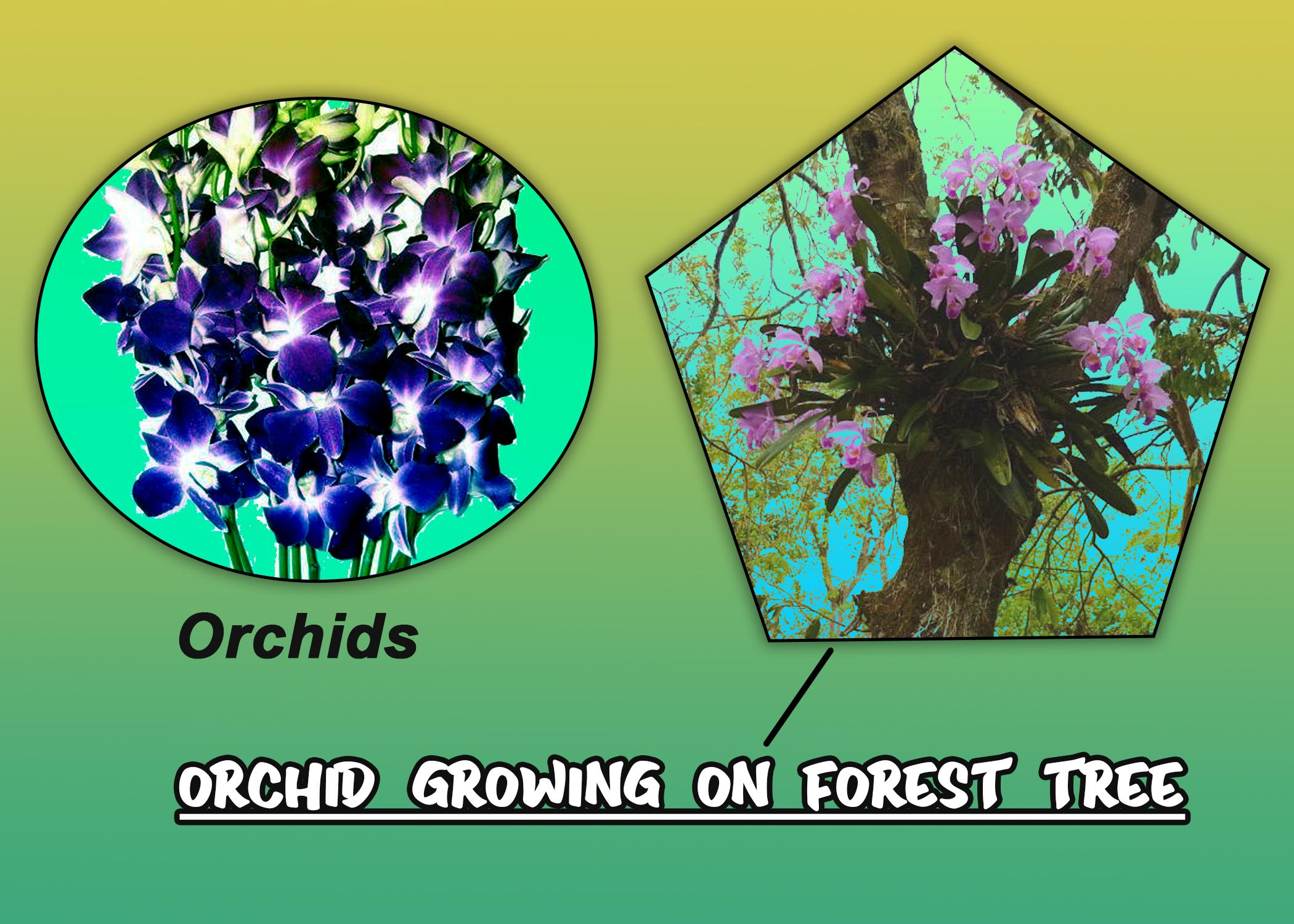
Mention the term used to describe a population intersection between an orchid growing on a forest tree
Answer
562.5k+ views
Hint: The term is associated with the two organisms in which one benefits from the other and the other organisms neither benefit nor harm the organisms. The organism benefit in terms of nutrient, shelter,
support, or locomotion from the unaffected host species.
Complete answer:
-A relationship in which the two organisms can be helpful or harmful or even cause no effect is known as a symbiotic relationship.
-When one species is benefited by the other species and other organisms neither harmed nor benefited is known as commensalism. It is a type of symbiotic relationship.
Commensalism is used to describe a population intersection between an orchid growing on a forest tree. Many of the orchids are epiphytes. Epiphytes can grow on other plants.
-When the orchids grow on the other plant they benefit because they grow on the top of the canopy because it helps the orchids from being eaten by ground-dwelling organisms.
-When they grow on the top of the canopy, this allows them to receive more sunlight for photosynthesis.
-Orchids also receive nutrients from air and compost on the trees. Therefore, they do not harm the plants on which they are growing by sucking the nutrients from them.
Some more examples of Commensalism are
Sharks and Remora fish-
The suckerfish is a very small fish and they make a commensal relationship with the large sea organisms mainly sharks, turtles, and whales.dear suckers attached to the fins of the host animals. This benefits them for transportation and protection from predators. The suckerfish also feed on the leftover of the sharks. Due to the small size of the fish, the sharks barely feel its presence
Milkweed and Monarch butterfly
The monarch butterfly in its larval stage is attached to a species of milkweed that contains toxic chemicals known as a cardiac glycoside.
-The cardiac glycoside is a poisonous chemical. So, most of the animals avoid contact with the plant. The monarch butterfly stores the toxin throughout their lifespan and the birds find them distasteful. So, they don't eat them.
-The larva of the monarch butterfly is resistant to the toxic chemicals and therefore they are not affected by them. Milkweed does not cause any harm to the developing butterfly because it is a carnivorous plant.

Note: -Commensalism is the term given by Belgian zoologist and paleontologist Pierre-Joseph van Beneden.
-Depending on the relationship between the organisms there are different types of commensalism- Metabiosis, Phoresy, Microbiota.
support, or locomotion from the unaffected host species.
Complete answer:
-A relationship in which the two organisms can be helpful or harmful or even cause no effect is known as a symbiotic relationship.
-When one species is benefited by the other species and other organisms neither harmed nor benefited is known as commensalism. It is a type of symbiotic relationship.
Commensalism is used to describe a population intersection between an orchid growing on a forest tree. Many of the orchids are epiphytes. Epiphytes can grow on other plants.
-When the orchids grow on the other plant they benefit because they grow on the top of the canopy because it helps the orchids from being eaten by ground-dwelling organisms.
-When they grow on the top of the canopy, this allows them to receive more sunlight for photosynthesis.
-Orchids also receive nutrients from air and compost on the trees. Therefore, they do not harm the plants on which they are growing by sucking the nutrients from them.
Some more examples of Commensalism are
Sharks and Remora fish-
The suckerfish is a very small fish and they make a commensal relationship with the large sea organisms mainly sharks, turtles, and whales.dear suckers attached to the fins of the host animals. This benefits them for transportation and protection from predators. The suckerfish also feed on the leftover of the sharks. Due to the small size of the fish, the sharks barely feel its presence
Milkweed and Monarch butterfly
The monarch butterfly in its larval stage is attached to a species of milkweed that contains toxic chemicals known as a cardiac glycoside.
-The cardiac glycoside is a poisonous chemical. So, most of the animals avoid contact with the plant. The monarch butterfly stores the toxin throughout their lifespan and the birds find them distasteful. So, they don't eat them.
-The larva of the monarch butterfly is resistant to the toxic chemicals and therefore they are not affected by them. Milkweed does not cause any harm to the developing butterfly because it is a carnivorous plant.

Note: -Commensalism is the term given by Belgian zoologist and paleontologist Pierre-Joseph van Beneden.
-Depending on the relationship between the organisms there are different types of commensalism- Metabiosis, Phoresy, Microbiota.
Recently Updated Pages
A man running at a speed 5 ms is viewed in the side class 12 physics CBSE

State and explain Hardy Weinbergs Principle class 12 biology CBSE

Which of the following statements is wrong a Amnion class 12 biology CBSE

Two Planoconcave lenses 1 and 2 of glass of refractive class 12 physics CBSE

The compound 2 methyl 2 butene on reaction with NaIO4 class 12 chemistry CBSE

Bacterial cell wall is made up of A Cellulose B Hemicellulose class 12 biology CBSE

Trending doubts
What are the major means of transport Explain each class 12 social science CBSE

Which are the Top 10 Largest Countries of the World?

Draw a labelled sketch of the human eye class 12 physics CBSE

Explain sex determination in humans with line diag class 12 biology CBSE

Give 10 examples of unisexual and bisexual flowers

State the principle of an ac generator and explain class 12 physics CBSE




